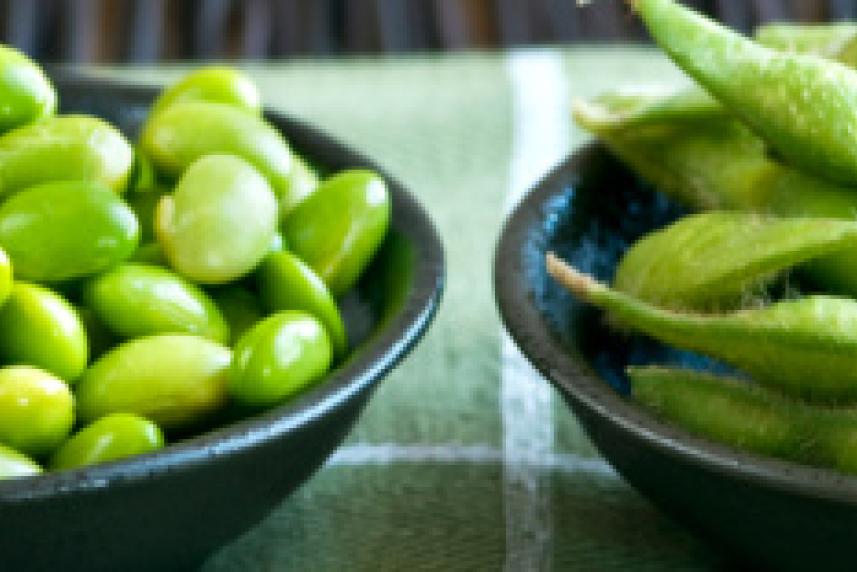Five plant-based proteins you should be eating
Skip wannabe meats for unprocessed vegetarian proteins.

Tempering your inner carnivore by working a few meat-free meals into your week is savvy. Not only will you score some of the nutritional benefits vegetarians reap, but you’ll reduce your risk for disease. For instance, research has shown that eating too much meat could increase your risk of kidney disease due to its high acidity. But don’t think you have to trade your turkey club for tofurkey jerky. You can actually skip those questionable meat stand-ins altogether. “If you plan your meals around whole plant foods, you can get enough protein,” says Sharon Palmer, RD, author of The Plant-Powered Diet and Plant-Powered for Life. That’s with or without a main “meat-like” dish. She points out that whole grains can have as much protein as an ounce of meat and even vegetables have on average 3 grams per serving. Combine them with some of the protein-richer foods below and you’ll be well on your way to meeting your daily requirement (46 grams/day for women and 56 grams/day for men). Here are 5 plant-based proteins and ideas for using them to get you going.
Edamame
Protein: 1 cup = 17 grams
“Edamame is a young soybean that provides all essential amino acids, the building blocks of protein,” says Jackie Newgent, RDN, CDN, author of The With or Without Meat Cookbook. She likes it for its versatility. You can serve it steamed in the pods as an appetizer like the Japanese do or add it to just about anything you’re making. “You can plop the shelled edamame into just about any savory dish, including pilaf, soup, or salad, to kick up the protein,” she says.
Legumes (beans & lentils)
Protein: 1/2 cup = 7–8 grams
“Legumes are very high in protein,” Palmer says. “A half-cup cooked has even more than 1 ounce of meat!” Not to mention the vitamins, minerals, antioxidants, and fiber. She recommends at least one serving a day. “Dry beans can also be one of the easiest and cost-friendliest ways to get protein,” Newgent says. “The canned varieties are one of the quickest ways.” Keep both on hand—dry beans for when you are able to plan ahead since they usually require an overnight soak and cans for quick meals. Lentils marry the best of both worlds: they’re inexpensive, don’t require soaking, and are just as versatile as beans. Add them to salads, soups, stews, even your favorite bowl of pasta for an extra punch of protein.
Quinoa
Protein: 1 cup = 8 grams
While you might have filed quinoa under healthy whole grain in your mental pantry, it deserves a spot in the plant-based protein category too. “Quinoa can be served as a whole grain, like brown rice, yet it’s higher in protein than traditional grains,” Newgent says. “And it cooks up in under 20 minutes.” You can pack your rice cooker away in the attic and start subbing quinoa in anywhere you might use rice or orzo.
Soymilk
Protein: 1 cup = 7 grams
While you have many alternative milks in mainstream grocery stores these days, soy has been there longest and is still your best bet. You’ll get almost as much protein as you would from a cup of 2% cow’s milk but without any of the saturated fat. “Soymilk is much higher in protein than almond milk,” Palmer says. Pour soymilk into your coffee, tea, and cereal just as you would any other milk. Or make a high-protein smoothie with fruit, soymilk, peanut butter (2 Tbsp = 8 g protein), flaxseed (1 Tbsp = 1.5 g protein), and hemp seeds (1 Tbsp = 3 g protein). That will get you to nearly half your daily needs—no pricey, processed protein powder needed!
Tofu
Protein: ½ cup = 11 grams
The best-known vegetarian protein food, tofu is basically a solid, condensed form of soymilk. And besides protein it also packs a healthy dose of calcium and iron. “I love tofu and have it a few times per week,” Palmer says. “Asian populations consume it regularly and they have lower rates of diseases.” She likes it diced and cooked in flavorful dishes, such as ratatouille, stir-fry, and curry.


